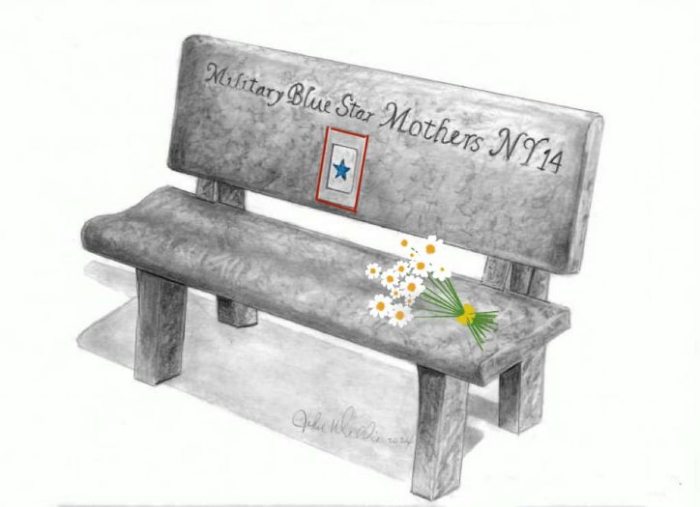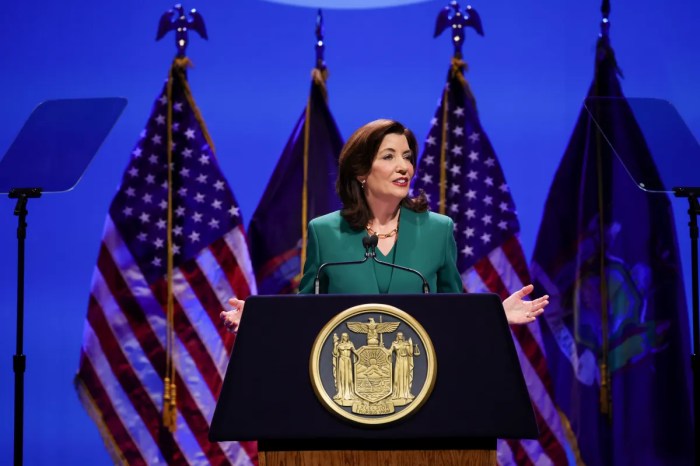
(Contributed Photo)
In some respects, Jim seems to be a rebel without a cause, an angry young man unclear about what angers him, He is an extremely complex person.
— Harvey Russell, vice president of Pepsi-Cola, in 1956
In the Village of Manhasset, virtually all of its citizens, throughout the centuries, have passed through this life in splendid anonymity. Few have lived public lives. The greatest standout has been Jim Brown, who from the late 1950s onward, lived a most public and consequential life.
A native of St. Simons, GA, Brown was born in 1936. Seven years later, his mother moved to New York to find work as a domestic. The Brown family lived first in Great Neck before settling in Manhasset Valley. The young Jim Brown was educated in the Manhasset School District. In the 1950s Long Island, gangs of delinquent youth roaming the streets was not uncommon. Brown and his friends belonged to The Gaylords, a juvenile gang that behaved in the manner of the day.
“We would go to other neighborhoods, go to parties, try to pick up girls,” a childhood friend, the Rev. Ed Corley, told a Brown biographer. “We’d fight other gangs. Sometimes we won; sometimes we lost…One of the reasons we were all good athletes is because we were always running. We were either chasing other guys, trying to fight them, or we were being chased. Running, running, running. I was always running.”

(Courtesy of the Manhasset Public Schools)
That running came in handy. At Manhasset High School, Brown came into his own. By his sophomore year, Brown stood six feet tall and weighed 174 pounds. Brown lettered in no less than five sports: Football, lacrosse, basketball, track and field and baseball. The New York Yankees scouted Brown as a pitching prospect. Brown was a halfback in football and a center lineman in lacrosse.
As important, the young Brown had an ally in football coach Ed Walsh. The latter knew that Brown was college material. The young man needed to make good marks. He listened to Walsh. Brown, according to biographers, graduated from Manhasset with a “B” average.

With Walsh, Brown had a friend for life. No matter how far Brown traveled, Manhasset would remain a pleasant memory, his true home. The village, he claimed, “…was always an example of how people should be treated.”
Colleges came knocking. Brown chose Syracuse, where he starred in both football and lacrosse. His talent in football came at the right time. With the triumph of the television set, football, as an action sport, was situated to replace baseball as the national pastime.

(Wikipedia Commons)
After graduating from Syracuse, Brown was chosen in the first round by the Cleveland Browns. Cleveland wasn’t New York. It was however, a sports-crazy city of up to 900,000 residents. It was also coached by Paul Brown, an Ohio native who had led the team to championship glory in the 1940s and ‘50s.
Brown quickly conquered the NFL. He, too, was highly popular in Cleveland. The NFL’s Golden Age was coming into its own: Vince Lombardi as head coach, Johnny Unitas and Bart Starr as the quarterbacks, Dick Butkus and Deacon Jones defining agile and quick defensive players—and Jim Brown as the running back. It wasn’t until Gale Sayers joined the NFL in the mid-1960s that Brown had any competition as the league’s top running back.
No one who saw Brown play could forget the experience. In play after play, the defense knew what was coming. Brown was blessed with a solid offensive line and in Leroy Kelly, an All-Star blocking back. Brown was also a one-man show, combining speed and power like no back since Bronco Nagurski. Brown had his style. At the end of a play, he was always the last one up from the pileup. He got up slowly and just as slowly, walked his way back to the huddle. The man took countless cuts, bumps and bruises. However, part of it was tactical. “Getting up with leisure” was a way for Brown to conceal the physical punishment that came his way.
Brown did not seek to be liked or even respected. He wanted to be feared. He wanted a defensive player to remember full well when Brown lowered his shoulder and gave him a good hit. Above all, a running back should never run out of bounds. Ever. In retirement, Brown publicly castigated such backs as Franco Harris and Kevin Mack for doing just that. What could they do? This was the greatest running back in history talking.

(Wikipedia Commons)
Brown produced. He averaged 5.2 yards a carry. In 1958, he set a single-season rushing record, gaining 1,527 yards in 12 games. On it went. Brown was a Pro Bowler in each of his nine seasons. He was a three-time Most Valuable Player. He set records for single-season rushing (1,863 in 1963), career rushing (12,312 yards) and all-time leader in rushing touchdowns (106). He was the first player to reach the 100-rushing-touchdowns milestone. Think of the way Babe Ruth dominated major league baseball in the early 1920s and you can picture Brown’s own reign in the late 1950s and 1960s.
As the 1960s unfolded, Brown felt he had to be more than an athlete. The turmoil of that decade moved him deeply. He found a soulmate in Muhammad Ali, who held similar views. Americans had long preferred professional athletes be low-keyed and stoical. Again, the advent of television and the explosion of a celebrity culture would change that.
Brown and Ali were friends. The two had different personalities. Ali, with Howard Cosell as his straight man, kept Americans entertained. By the 1980s, this 1960-style radical was now as much a part of the cultural establishment as Bob Hope or Jack Benny.
Brown was the angry man. He never mellowed with the times. Ali’s main cause was his opposition to the Vietnam War and his refusal to comply with draft board orders. His style offended certain sensibilities. Still, the man had a point.
In the early 1960s, the Kentucky Draft Board declared the then-Cassius Clay exempt from the draft. Ali had to be saved for boxing. When the latter won the title and began making waves, the Feds had their own ideas. Ali would now become subject to the draft. In time, the U.S. Supreme Court commuted his jail sentence.
Brown was different. His social causes were economic. He disagreed with a solely integrationist approach. The goal, instead, should be economic empowerment. Brown was a man on a mission. He built his own media empire: A newspaper column, a radio commentator, and as founder of the Negro Industrial Economic Union, one dedicated to creating black-owned businesses.
Brown was dismayed that Cleveland, as in most Northern cities, was residentially segregated. He did not, however, look at the city’s East Side as a ghetto. Instead, he saw a gold mine of economic opportunity.

(Wikipedia Commons)
Back on the field, Brown remained unstoppable. In 1964, the Browns won their first NFL title in 12 years, shutting out the favored Baltimore Colts, 27-0. That winter, Brown ventured into movies, starring in Rio Conchos. On the set, he was introduced to Elvis Presley, who was filming his own Western. As with Presley, Brown was bitten by the movie bug. A new career beckoned.
In 1965, Brown had another stellar year. Would it ever end? Indeed, it would. In the off-season, Brown co-starred with Lee Marvin in The Dirty Dozen. As training camp approached, Browns management was anxious. Was Brown coming to camp? In London, where filming took place, Brown shocked the sports world by announcing his retirement.
It made sense. Brown would retire at the top of his game. No one would see him as an aging running back, getting pummeled by younger and stronger linebackers. The only memories would be as Brown dominating. Plus, the toll of high school, college and pro ball took their price. Brown’s first wife recalled him tossing and turning at night, trying to find the perfect place to sleep, amidst the scars and welts his body had sustained.
The NFL in Brown’s day was a dirty league: The pile ups saw players kicking (even in the mid-section), biting, spitting, clawing and in general, getting in all the low blows they could as the whistle blew. And no one was targeted more than Jim Brown.
The Dirty Dozen was a promising start to Brown’s movie career. Critics hailed Brown in the language of the day as the “Negro Clark Gable.” By the early 1970s, “blaxploitation” films became popular. Brown’s niche was the “Slaughter” (no first name) character in such films as Slaughter and Slaughter’s Big Rip-Off. Brown had a string of popular movies, including Ice Station Zebra (1968), Kenner (1969), El Condor (1970) and Three The Hard Way (1974.) A biographer hailed him as the silver screen’s “first black action star.”
Brown continued acting into the 1970s and beyond. In time, the man was making news for his private life. Throughout the decades and up until the year 2002, Brown had several scrapes with the law. His legal team had to fend off some serious felony charges.
Brown was a candidate for redemption. He found domestic happiness in his second marriage and the couple’s two children. His new business venture, AmerIcan, continued the earlier vision of economic empowerment.
Mostly, Brown worked out of the limelight. “Jim Brown goes into the roughest places in the country, the ugly places, and he pulls people,” said a Cleveland friend, James Fox. “He saves lives. He has saved hundreds of lives.”
Fearless on the field, he was just as fearless in the inner city. A resident of southern California, Brown was not housebound when the 1992 Los Angeles riots took place. Instead, he was on the streets of South Central, trying to keep the peace.
Brown remained as outspoken as ever. He denounced black athletes for being “the most embarrassing collection of individuals I have ever known.” Brown spent a lifetime giving back to depressed neighborhoods across the country. Did other black athletes do the same? He declared the fatherless family as black America’s greatest problem. Brown has published two autobiographies. He has been subject of several biographies, plus a Spike Lee documentary, Jim Brown: All-American.
He remained popular in Cleveland, often showing up on the sidelines of a Browns game. They were more homecomings. In 2005, Syracuse established two scholarships, one for football, the other for lacrosse, in his name.

Finally, in April 2013, a Jim Brown Field was unveiled at Manhasset Valley Park. Brown has never been an emotional man. This homecoming was different. In all his travels around the world, Manhasset would always be home.
“This school formed my life,” he said at a packed house at the Manhasset High School gymnasium. “It gave me my foundation. It gave me my confidence. It pointed out to me the value of education, the value of knowledge and wisdom. It taught me never to give up. It taught me that all of us are God’s children.”
Brown even flashed more humor, something rarely seen in his years as a public figure. He joked that many of the young people in the audience wouldn’t know who he was. What? People in Manhasset not knowing about Jim Brown? That’s a good one.































